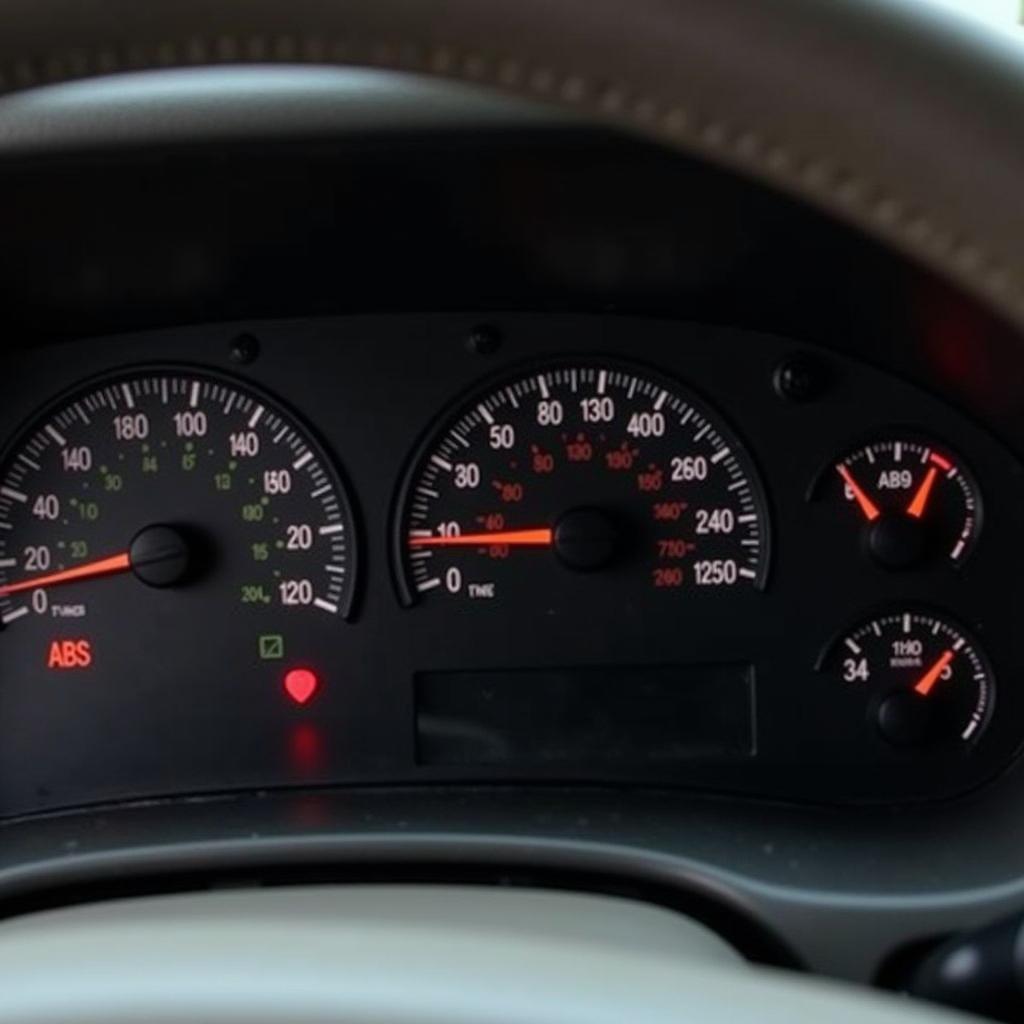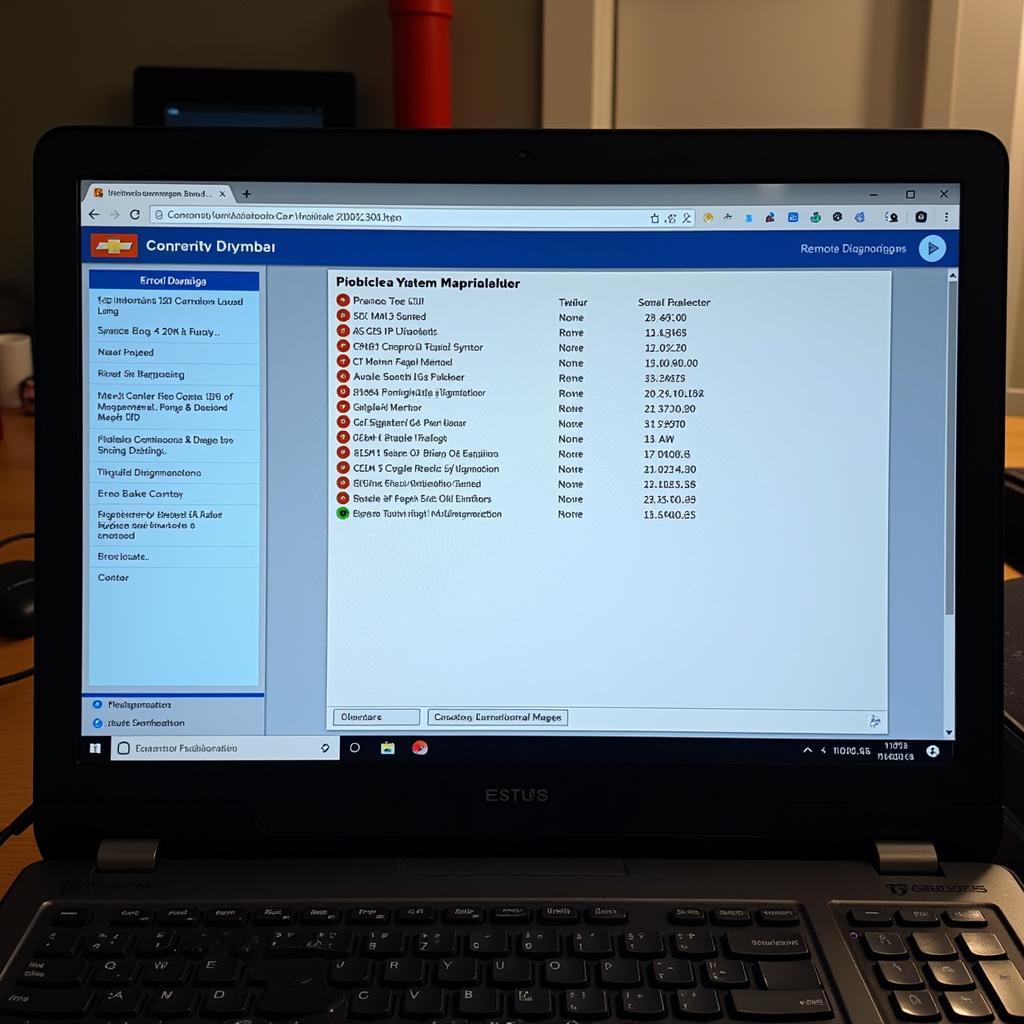If your 2003 Chevy Trailblazer is displaying a dashboard warning related to the brakes, it’s crucial to address the issue promptly. This guide will delve into the common causes behind these warnings, provide you with practical troubleshooting steps, and offer solutions to get you back on the road safely.
Understanding the Warning Signs
The 2003 Trailblazer utilizes a system of warning lights to alert the driver of potential issues, including those related to the braking system. Here are the most frequent brake-related warnings you might encounter:
- ABS Light: This light illuminates when the Anti-lock Braking System (ABS) detects a fault. While you may still have regular braking function, the ABS might not engage during hard braking, potentially leading to wheel lockup.
- Brake Warning Light: This light typically indicates one of two things: either the parking brake is engaged or there’s a problem with the hydraulic brake system, such as low brake fluid.
 2003 Trailblazer Dashboard Warning Lights
2003 Trailblazer Dashboard Warning Lights
Common Causes and Troubleshooting Tips
1. Low Brake Fluid
Problem: A leading cause of brake warnings, low brake fluid can significantly impact braking performance.
Troubleshooting:
- Check the Brake Fluid Reservoir: Locate the reservoir (usually near the firewall on the driver’s side) and check the fluid level. It should fall between the “Min” and “Max” lines.
- Add Brake Fluid (If Necessary): If the level is low, carefully add the correct type of brake fluid specified in your owner’s manual.
- Inspect for Leaks: A drop in fluid level indicates a leak. Look for signs of fluid around the master cylinder, brake lines, calipers, and wheel cylinders.
Solution: If you detect a leak, it’s crucial to have it repaired by a qualified mechanic immediately.
2. Worn Brake Pads
Problem: Brake pads are designed to wear down over time. When they become too thin, it triggers the brake warning light.
Troubleshooting:
- Listen for Noises: Worn brake pads often produce a high-pitched squealing or grinding sound when braking.
- Visually Inspect the Pads (If Possible): If you’re comfortable with basic car maintenance, you can try to visually inspect the brake pads through the wheel spokes. Look for a thin pad or one with less than ¼ inch of friction material remaining.
Solution: Worn brake pads require replacement. While it’s possible to do this yourself, it’s generally recommended to have it done by a professional.
3. Faulty ABS Wheel Speed Sensor
Problem: The ABS system relies on wheel speed sensors to function correctly. A faulty sensor can trigger the ABS light.
Troubleshooting:
- Use an OBD-II Scanner: An OBD-II scanner, available at most auto parts stores, can read the error codes stored in your vehicle’s computer, potentially pinpointing a faulty sensor.
Solution: Replacing an ABS wheel speed sensor often requires specialized tools and knowledge. It’s advisable to seek professional assistance for this repair.
Remote Diagnostics and Software Solutions: The Future of Car Repair
In today’s technologically advanced world, remote diagnostics and software solutions are revolutionizing the automotive repair industry. As a specialist in remote automotive electrical diagnostics, I utilize cutting-edge technology to diagnose and resolve vehicle issues, including those related to braking systems.
How it Works:
- Vehicle Data Transmission: Your vehicle’s onboard computer constantly monitors various systems, including the brakes. Through a secure connection, I can access this data remotely.
- Advanced Diagnostic Software: I employ sophisticated software that analyzes the transmitted data, identifying error codes, sensor readings, and other vital parameters.
- Expert Analysis and Recommendations: Based on the data analysis, I can pinpoint the root cause of the problem and provide you with accurate and efficient repair recommendations.
Benefits of Remote Diagnostics:
- Convenience: No need to visit a mechanic; diagnostics can be performed from the comfort of your home.
- Faster Diagnosis: Remote access to vehicle data allows for quicker identification of issues.
- Cost-Effective: Remote diagnostics can potentially save you money on unnecessary repairs by accurately pinpointing the problem.
Software Updates and Programming:
Beyond diagnostics, remote software solutions can also address certain brake-related issues. In some cases, software updates or reprogramming can resolve glitches, improve system performance, and even enhance safety features.
 Remote Diagnostics Software Interface
Remote Diagnostics Software Interface
Conclusion
A dashboard warning related to your 2003 Trailblazer’s brakes should never be ignored. By understanding the common causes and following the troubleshooting steps outlined above, you can take the first steps towards resolving the issue. Remember, safety is paramount; if you’re unsure about any aspect of brake repair, consult a qualified mechanic or explore the convenience and efficiency of remote diagnostics and software solutions.

